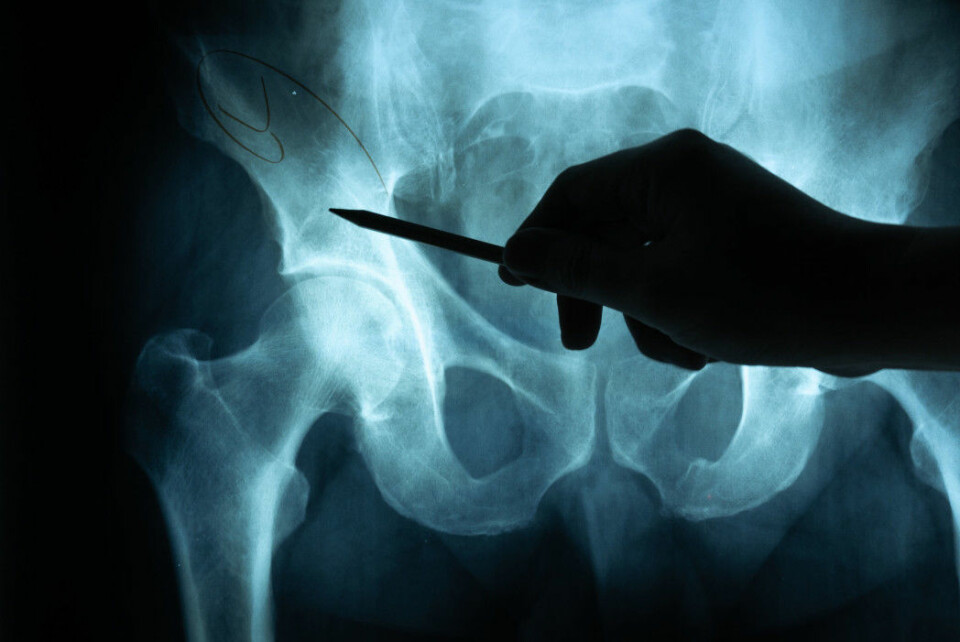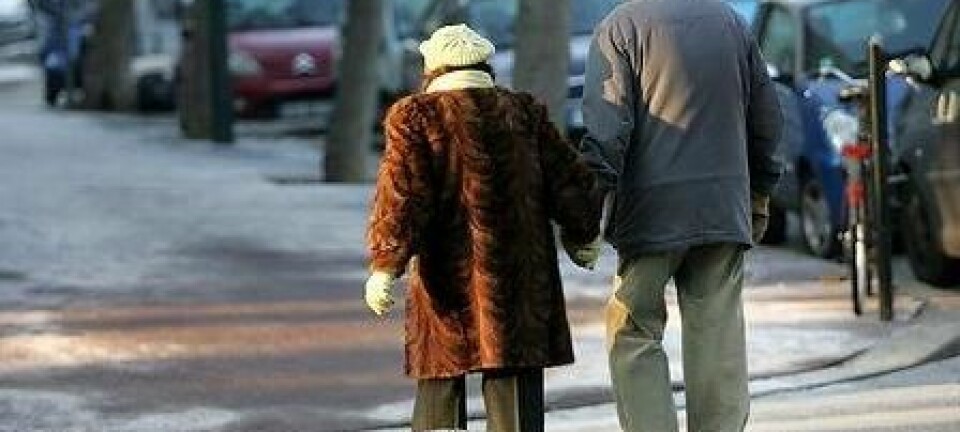
Greater risk of dying from a hip fracture if you live in the city
One to two years after a hip fracture, patients in urban areas had up to a 20 per cent greater risk of dying compared to those who lived in rural areas.
Suffering a broken hip at a ripe adult age is a major strain.
“Many of these patients end up needing care after a fracture. Hip fractures are a huge burden for older people, and individuals who’ve suffered a hip fracture have far higher mortality rates than other elderly people,” says Tone Kristin Omsland in the Department of Community Medicine and Global Health at the University of Oslo.
She is one of the researchers behind a new study that has analysed how long people live after hip fractures. The researchers have compared people living rurally with those living in cities.
“We’re seeing that urban dwellers are at greatest risk of death after hip fractures. One to two years after a hip fracture, men were up to 20 per cent more likely to die compared to their rural counterparts, and women were up to 15 per cent more likely to die,” Omsland says.
As patients age, the risk becomes even more pronounced – on average, the risk of death from hip fractures is eight per cent higher in the city than in the country. Femoral fractures are the most common of the several types of hip fractures.
More hip fractures in the city
Several other studies have shown that the risk of hip fractures is greater in urban settings than in rural areas.
“We don't know very much about why more hip fractures occur in the city than in the countryside. But in a previous study, we found that people living in the city had lower bone density than those in the country – and low bone density is a risk factor for hip fractures. So this could be a contributing cause,” says Omsland.
However, the researchers found very few studies that compared urban versus rural mortality following hip fractures.
“We thought this would be exciting to look into. We were surprised to find such big differences between urban and rural settings – we didn’t expect that,” says associate professor Omsland, who supervised the study.
33 per cent of men die shortly after breaking a hip
The study is based on data from 96 693 hip fracture patients admitted to hospital between 2002 and 2013. The patients were 50 to 100 years of age.
About 21 per cent of women suffering hip fractures die in the first year after their injury, as do up to 33 per cent of men.
“These are hugely dramatic figures. The reason so many men die during the first year is likely because they’re often frailer initially than women are. It isn’t that common for men to have hip fractures. About 70 per cent of patients are women,” says Omsland.
The researchers divided the patients into three groups – those who lived in rural, semi-rural and urban communities. Then they investigated how many of the patients died in the years following the hip fracture.
“We didn’t study the causes of death in this project, because there are special challenges in terms of data quality. Instead, we chose to focus on all types of death after hip fracture,” says Omsland.
Other studies have found that the death of individuals after a hip fracture often results from cardiovascular disease and infections, like pneumonia.
“But the picture is often complicated in that several underlying factors may contribute to the death. It’s also true that both one’s physical and mental health are affected by such an injury. The patient’s state of health before the fracture plays a role, too,” Omsland says.
Greater population density results in earlier mortality
Patients who lived in rural communities lived the longest post fracture, those who lived in semi-rural areas lived a little less long, while those who lived in the city died the soonest. The researchers do not know the reason for the differences.
“We have no particularly good explanation for why this is the case. The survival rate is about the same everywhere for the 30 days immediately post fracture, so the discrepancy probably doesn't come from the hospital treatment,” says Omsland.
Rehabilitation services may offer an explanation.
“It may be that the rural municipal health services have less pressure on rehabilitation – so the patients are able to stay at the rehabilitation institutions longer. It would be exciting to look into this! But unfortunately, not much data is available from primary health care, where the rehabilitation takes place,” she says.
Better at taking care of each other?
Another explanation may be that the social environment in rural communities is better.
“Maybe people are more attentive and better at taking their neighbour out for a walk after an injury, whereas patients in the city spend more time sitting at home alone? But we don’t know for sure – it could also be that people living rurally are in better health to begin with,” says Omsland.
The researchers did not have access to information about what other diseases the patients had in this study.
Omsland notes that this lack of information is a weakness of the study. “It’s possible that the urban patients had more other diseases than those in rural areas, and that could explain part of the difference.”
Results considered exciting
Jan-Erik Gjertsen is the head of the Norwegian Hip Fracture Registry and chief physician at Haukeland University Hospital.
“Hip fracture patients are old and frail and have a one-year mortality of around 25 per cent. Studies like this one, which try to identify factors that affect mortality after hip fractures, are therefore important. The figures are taken from the NORhip database, and it’s great that this data is being used,” says Gjertsen.
He thinks the results are exciting.
“There is a surprisingly large difference in mortality between city and country. This is probably not due to the surgical treatment itself or the hospital treatment, since the short-term mortality after 30 days isn’t any greater,” says Gjertsen.
Rehab might be better
However, he isn’t sure what the x-factor is.
“It could be as simple as rehabilitation opportunities being better in rural communities. Patients’ level of function is probably decisive for mortality. Data from the Norwegian Hip Fracture Registry would make it possible to analyse patient-reported data that might be able to shed some light on this,” Gjertsen says.
The Norwegian Hip Fracture RegistryP is participating in a nationwide research project that is examining geographical variation in hip fracture treatment.
“The project may eventually contribute to knowledge about which factors are important. This study shows that more studies are needed to try to find a possible x-factor that explains the differences in mortality,” says Gjertsen.
Room for improvement
Gjertsen certainly believes there is room for improvement in the rehabilitation of hip fracture patients today, probably both in villages and cities.
“A lot of hospitals lack geriatricians, which makes it more difficult to put in place good orthogeriatric care. In addition, municipalities probably lack rehabilitation facilities,” he says.
Often, patients are discharged to hospital rehabilitation, which may have few resources for mobilization and rehabilitation.
“We should be strengthening more rehabilitation sites with interdisciplinary rehabilitation,” he says.
At the same time, Gjertsen is happy that after 30 days, mortality is similar in urban and rural areas.
“This indicates that the treatment patients are receiving in hospitals is probably quite similar, which is reassuring and good. Orthopaedists from most of the country's hospitals meet annually at the fall meeting, where we always discuss the treatment of hip fractures,” says Gjertsen.
Reference:
Siri Marie Solbakken et al: Urban–Rural Differences in Hip Fracture Mortality: A Nationwide NOREPOS Study, JBMR Plus, November 2019.
———

































